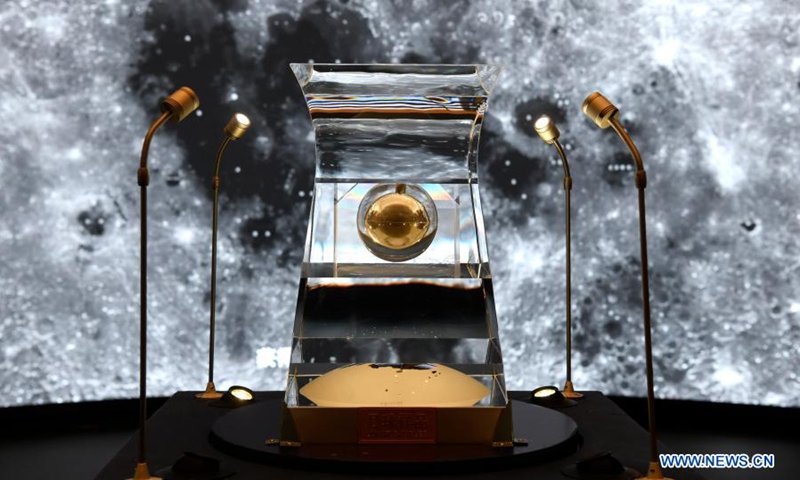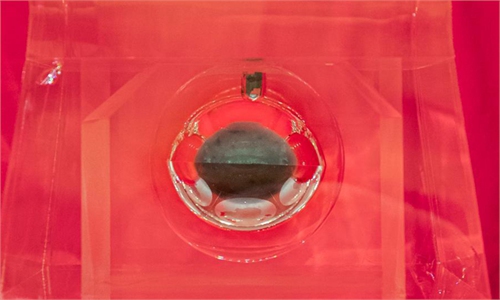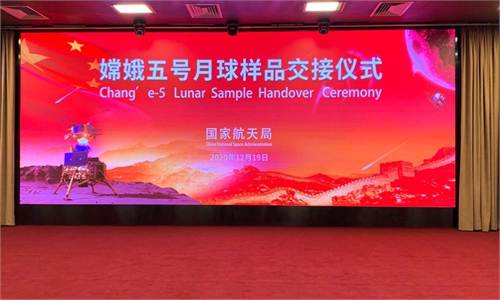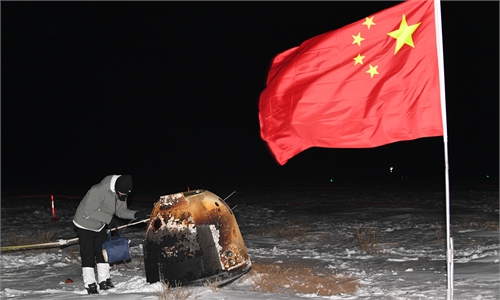Chinese scientists find high-pressure minerals in Chang'e-5 samples for the first time

The lunar samples No. 001 brought back by China's Chang'e-5 probe is displayed at the National Museum of China in Beijing, capital of China, February 27, 2021. Photo: Xinhua
Chinese scientists found for the first time high-pressure minerals in the lunar regolith samples brought back by the Chang'e-5 lunar probe. The discovery provides important evidence of the presence of impact ejecta near the craters in the sampling area of Chang'e-5, which was previously determined through the analysis of remote sensing data.
Chinese researchers from the Institute of Geochemistry Chinese Academy of Sciences found for the first time fragments of seifertite and stishovite, minerals formed from silicon dioxide at high temperatures and pressures, in the samples of lunar regolith. The sample also contained silicon dioxide and silica glass. This marks the first time for seifertite to be found in the samples from outside the Earth.
Meteorite impact is an important geological process for the combination of materials on the lunar surface, which serves an important factor for controlling the formation and evolution of lunar soil.
The high-pressure minerals formed after meteorite impacts are an important evidence of the process and determine the temperature and pressure of the rocks during the impact and infer the size of the impact crater.
However, high-pressure minerals have been rarely found in lunar samples and lunar meteorites limiting the research of lunar surface impacts from lunar samples.
The fragment of silicon dioxide in the sample recorded the pressure and subsequent heat and depressurization of a lunar impact event.
By simulating the temperature and pressure for the formation of the fragment under impact conditions, it was determined that the silicon dioxide debris may have come from the Aristarchus impact crater in the Chang 'e-5 sampling area.



